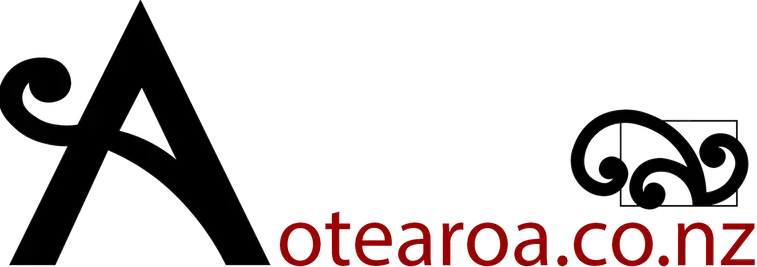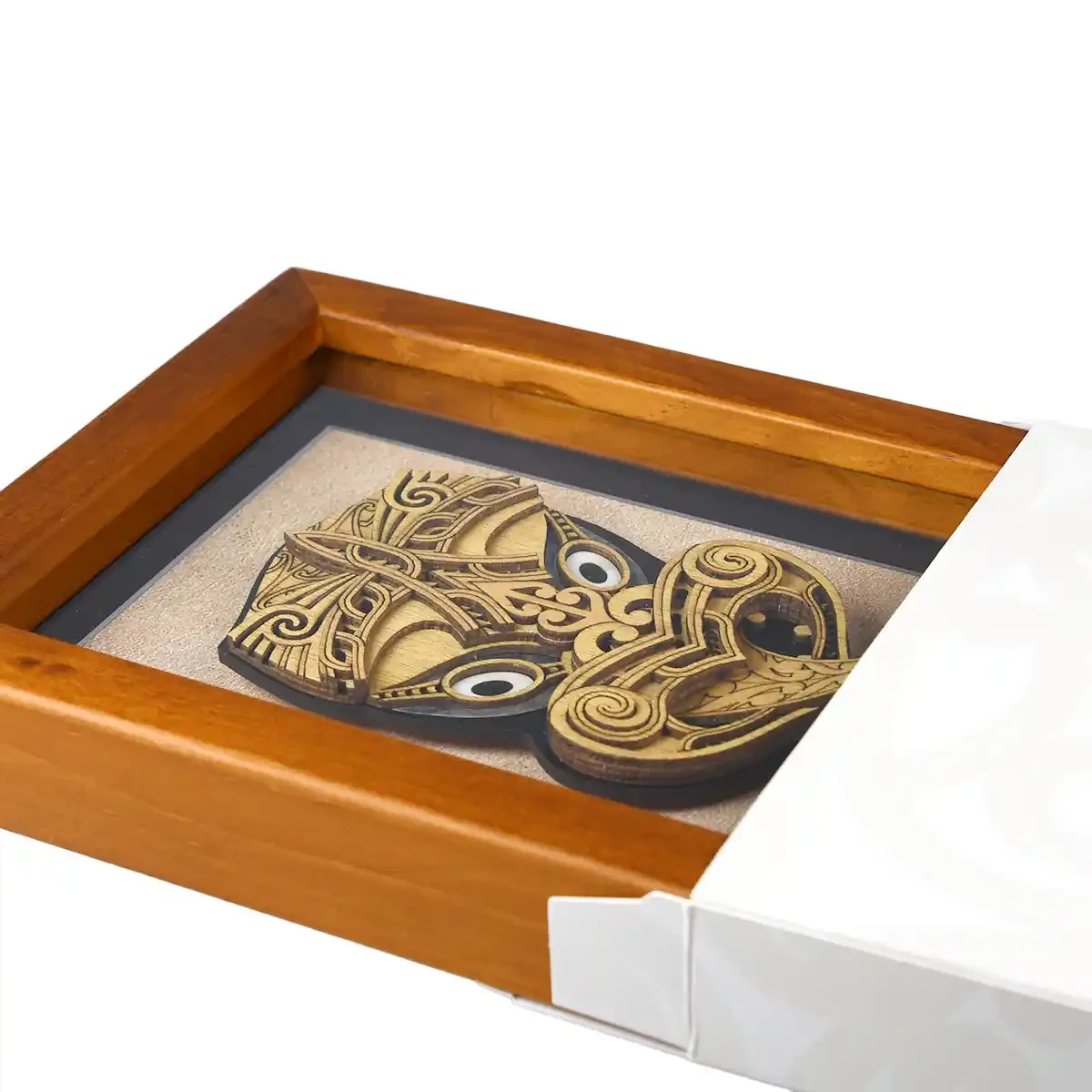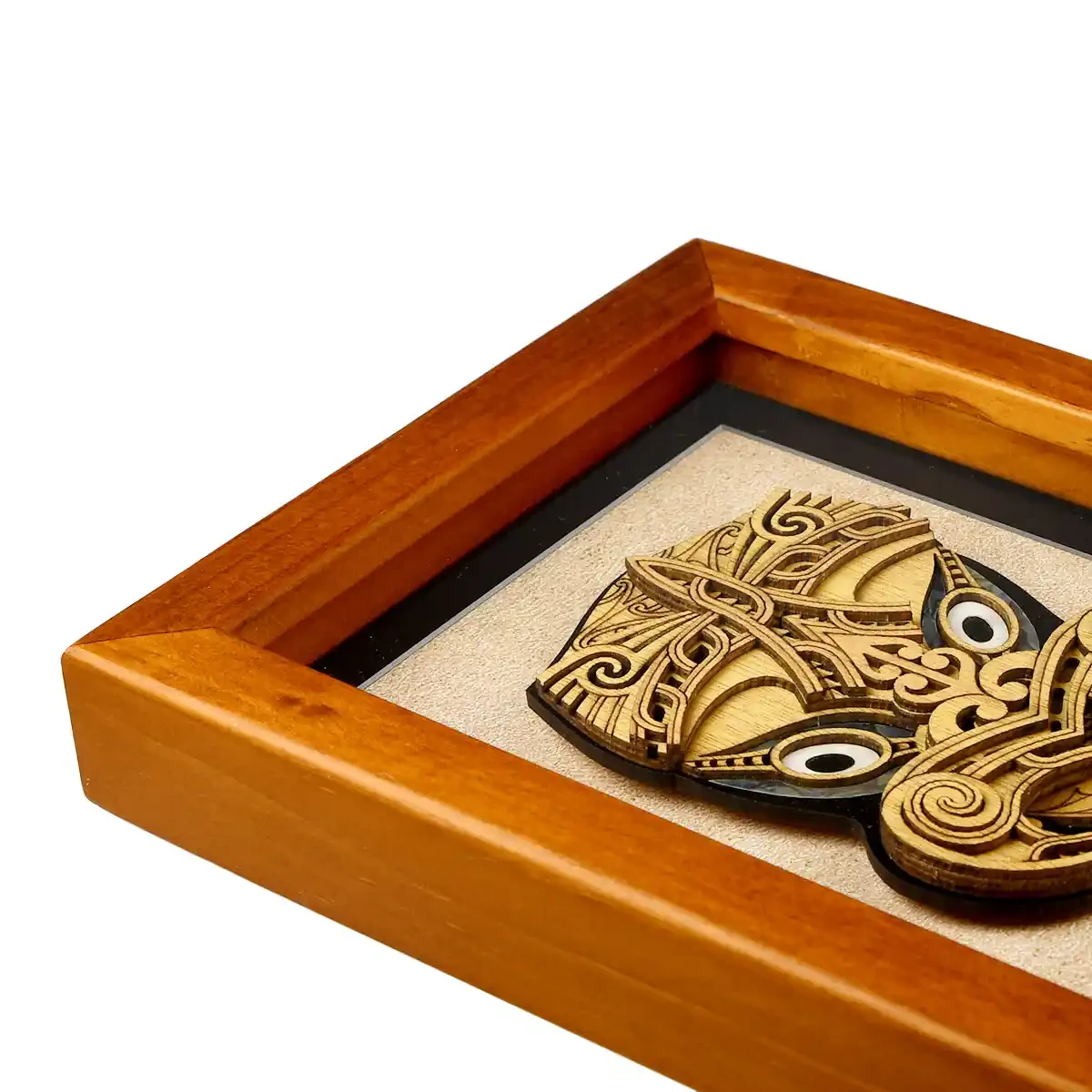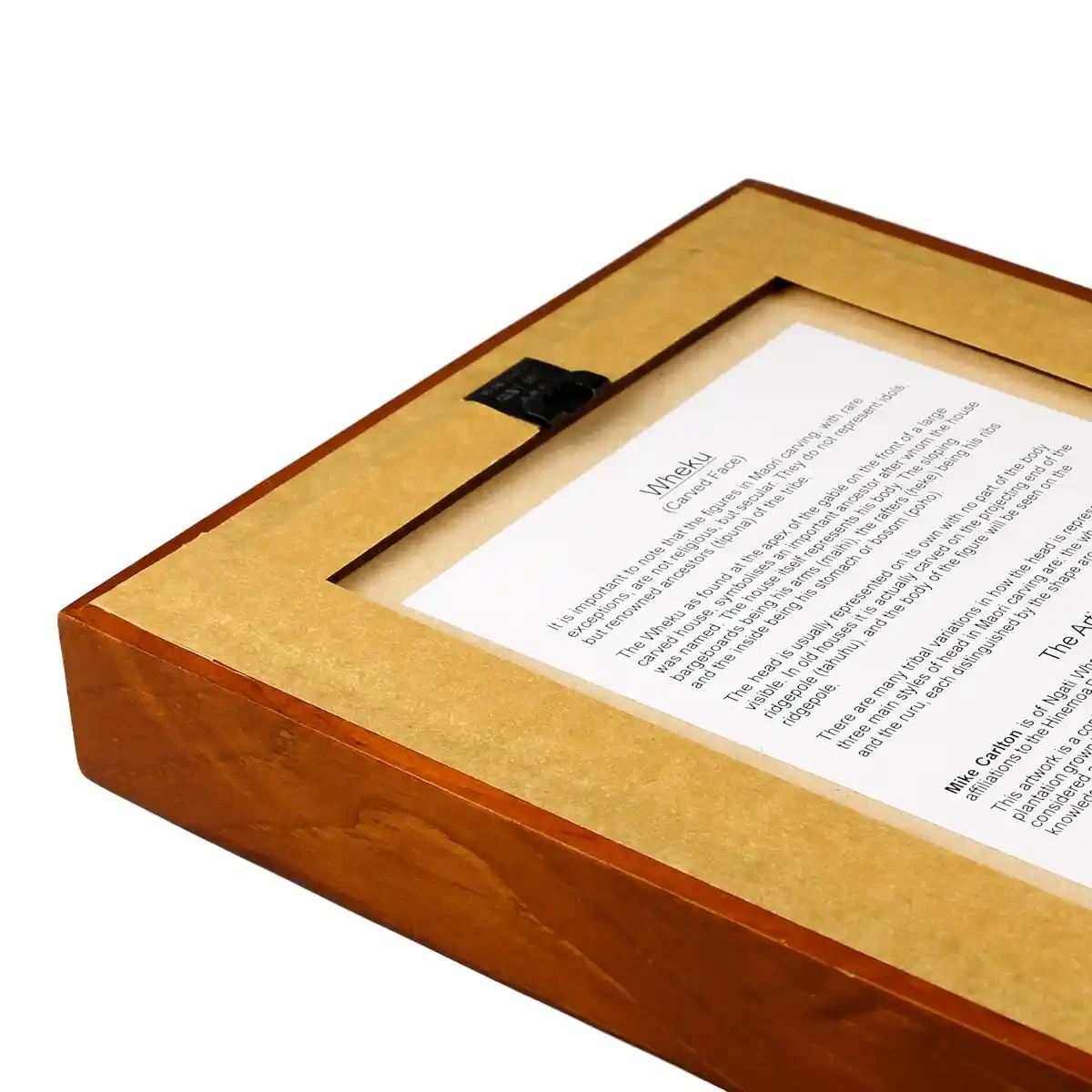Description:
Framed Māori wheku
Wheku means 'carved face'. Beautiful Māori wall decoration.Contemporary Māori art, Māori design, crafted from plantation grown gaboon using laser technology. This piece of art boasts super fine detail, paua inlay and is mounted on an earth toned background inside a custom glass covered shadow box frame. Each piece is individually signed by our Māori artist Mike Carlton and comes complete with wall mount and related story to back.
-
Overall size:
170mm x 222mm x 28mm
(6.69"x 8.74" x 1.10") - Comes with wall mount and back stand
- Description at the back of the frame
It is important to note that the figures in Māori carving, with rare exceptions, are not religious, but secular. They do not represent
idols, but renowned tipuna (ancestors) of the iwi (tribe).
The Wheku, as found at the apex of the gable on the front of a large carved house, symbolises an important ancestor after who the house was
named. The house itself represents his body. The sloping bargeboards being his maihi (arms), the heke (rafters) being his ribs and the
inside being his poho (stomach or bosom).
The head is usually represented on its own with no part of the body visible. In old houses it is actually carved on the projecting end of
the tahuhu (ridgepole), and the body of the figure will be seen on the ridgepole.
There are many tribal variations in how the head is represented. The three main styles of head in Māori carving are: the wheku, the koruru,
and the ruru, each distinguished by the shape around the eyes.
Source: Mike Carlton - Māori artist




